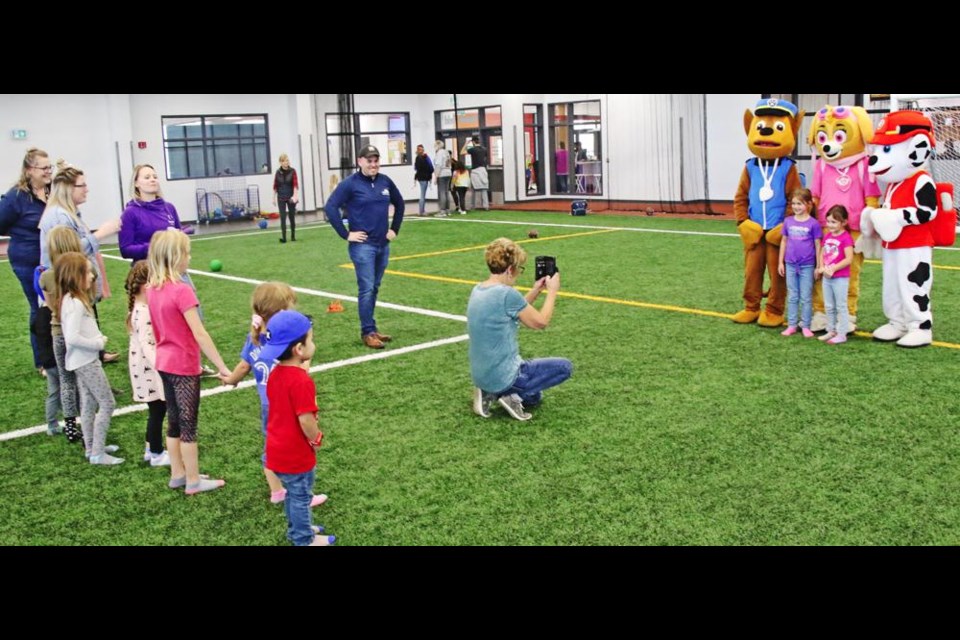WEYBURN – Weyburn Rotary members were given an update about the parks and leisure services department by Andrew Crowe, director of parks and leisure services for the City of Weyburn, at their meeting on Thursday.
He provided an overview of the departments under the umbrella of his office, noting he leads a team of managers for various divisions, such parks, leisure services and programming.
For the city’s parks, there are plans and issues the department deals with, including Dutch Elm disease, diversifying the city’s tree population, maintaining the parks in the city, and making plans for the former Haig School grounds.
In regard to Dutch Elm disease, federal regulations will end the usage of the primary chemical used to control it, so they will be looking to increase the amount of public education done so people learn they cannot trim or transport elm wood during the spring and summer months.
He noted the City has developed a database of all city-owned trees, which number about 8,000 on boulevards and in parks, and put a value on the trees based on size, condition and type.
Crowe said the most valuable tree in the city is a large elm on Fifth Street near Legacy Park school, valued at around $39,000.
The database can be used if a home owner or developer wants to remove or replace a city-owned tree, and they can bring up the tree and find out its value, he said.
The Parks department maintains 65 hectares of irrigated land, 40 ha of non-irrigated land, and 73 ha of land in the Tatagwa Parkway.
One of the initiatives they will need to pursue is diversifying the types of trees in the city, as Crowe noted about 40 per cent of trees in Weyburn are ash trees, and there is a nasty disease infecting ash trees around. If a bug gets in and kills their ash trees, it will have a devastating effect on the city’s tree population.
In regard to the Haig School property, Crowe said the City plans on doing a lot of community engagement about what the property will be developed for.
He noted there aren’t plans for more ball diamonds, but to maintain the ones that are there, and to add possible features like a cricket pitch or a track for BMX bikes and scooters to use. Another idea is for a pad that can be for outdoor skating in the winter, and for racket sports in the summer.
“That could change once we engage the public and see what they want,” he said. “We’re very excited about it,” adding they hope to develop a concept plan in 2024.
The next project in the city’s parks master plan is to look at developing something for Saskatchewan Drive, which extends from King Street west to the Riverwood development.
Crowe noted they are always looking for any partnerships that are possible to help provide more programs and services to city residents.
An example is Whitecap Resources providing funds to pay for drop-in times for families at the Credit Union Spark Centre.
The arenas are very heavily used, noted Crowe, as he pointed out for prime time usage, the City is at 90 per cent capacity. Prime time hours are from 4-10 p.m. on weekdays, and from 8 a.m. to 8 p.m. on the weekends.
“It would be hard for us to hit a higher usage than that,” said Crowe, adding that the Spark Centre sees a lot of usage from groups like the Sask. Health Authority, soccer, ball, football, lacrosse and even a cricket group in Weyburn, not to mention a world-class art gallery that rivals any bigger gallery in the province.
“It’s amazing we have this facility in a city of this size. We are the envy of larger cities in Saskatchewan,” he said.
Rotarian Heather Sidloski said she can confirm that, as for soccer, many clubs from larger centres come here to play and say they have nothing like it in their communities.
Sask Soccer has also stated there are very few other communities that have a facility like Weyburn’s. The only drawback is that the soccer pitch is a half-size FIFA soccer field, which means larger competitions wouldn’t be able to be held here.
Crowe noted it wasn’t feasible to build a full-size FIFA field indoors, as it would’ve added $11 million to the cost for that size of facility.





